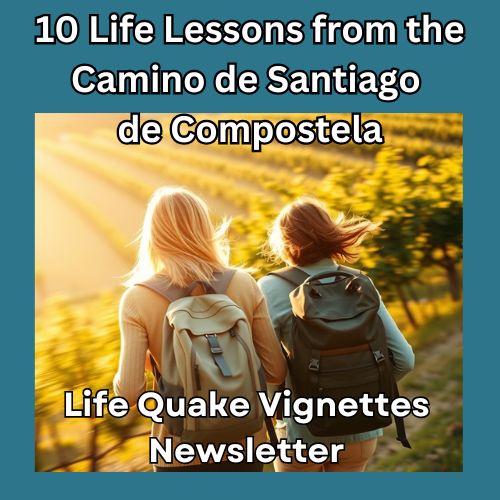Summary
High performance without recovery isn’t sustainable—it’s self-sabotage in slow motion. This article explores why our obsession with constant productivity is actually undermining our long-term success, health, and happiness. Through the compelling story of Lawrence Edgar, a high-achieving executive who learned this lesson the hard way, we’ll discover why rest isn’t the enemy of achievement—it’s a success booster. You’ll learn five key takeaways for sustainable performance, practical exercises for building recovery into your life, and why slowing down might be the fastest way to reach your goals.
Introduction: The Performance Paradox
We live in a world that worships at the altar of hustle. Social media feeds overflow with motivational quotes about grinding harder, sleeping less, and pushing through the pain. We’ve been sold the lie that rest is for the weak, that recovery is a luxury we can’t afford, and that true success comes only to those who never stop.
But what if I told you that this mindset—this relentless pursuit of performance without pause—is actually the very thing destroying your potential?
What if the secret to extraordinary achievement isn’t found in doing more, but in the radical act of strategic recovery?
The Story of Lawrence Edgar
The mahogany boardroom table gleamed under the harsh fluorescent lights as Lawrence Edgar straightened his silk tie for the fourth time in ten minutes. The acrid smell of his third espresso mingled with the sterile air conditioning, creating a cocktail that perfectly captured his current state of mind: wired, bitter, and artificially sustained.
At 42, Lawrence was the golden boy of Meridien Financial. His corner office on the 34th floor offered a breathtaking view of the city skyline, but he couldn’t remember the last time he’d actually looked out the window during daylight hours. The glass reflected his tired eyes back at him—bloodshot and rimmed with the kind of exhaustion that no amount of caffeine could mask.
“The Henderson deal needs to close by Friday,” he muttered into his Bluetooth headset, his fingers dancing across his laptop keyboard with mechanical precision. The plastic keys felt warm under his fingertips, worn smooth by countless late-night sessions. “I don’t care if you have to camp out in their lobby until they sign.”
His assistant knocked and entered with another stack of documents. The papers rustled like autumn leaves as she set them down, adding to the fortress of files that already surrounded him. The faint scent of her lavender perfume provided a momentary reprieve from the stuffiness of his office prison.
Lawrence hadn’t taken a proper vacation in three years. His last “break” was a working weekend in the Hamptons, where he’d spent Saturday morning on conference calls and Sunday reviewing quarterly reports. His wife had stopped suggesting family dinners months ago, tired of competing with his phone for attention. Even his twelve-year-old daughter Emma had learned that asking Daddy to play chess meant watching him move pieces absent-mindedly while responding to emails.
The warning signs had been mounting like storm clouds on the horizon. His hands trembled slightly as he reached for his coffee—whether from caffeine or stress, he couldn’t tell anymore. Sleep had become elusive, his mind racing with tomorrow’s tasks the moment his head hit the pillow. The crisp cotton sheets that once felt luxurious now seemed to mock him as he lay there, staring at the ceiling, calculating profit margins instead of counting sheep.
His doctor had mentioned something about blood pressure during his last check-up, but Lawrence had been on a call and only half-listened. The metallic taste in his mouth that appeared during particularly stressful days was just another inconvenience to push through. After all, champions don’t quit, right?
The breaking point came on a Tuesday that started like any other. Lawrence was presenting to the board, his voice steady and confident as he outlined their expansion strategy for the Asian markets. The PowerPoint slides flickered past—graphs climbing steadily upward, projected revenues in the millions. He could taste victory on his tongue, sweet and intoxicating.
Then the room began to tilt.
The fluorescent lights seemed to pulse and blur. The sound of his own voice became distant, as if someone else was speaking through a tunnel. The leather chair beneath him felt suddenly insubstantial, and the mahogany table seemed to stretch away from him like a funhouse mirror.
“Lawrence? Lawrence, are you alright?”
The concerned voices of his colleagues sounded muffled, as if he were underwater. The last thing he remembered was the rough texture of the carpet against his cheek and the antiseptic smell of the paramedic’s gloves as they checked his pulse.
The hospital room was a stark contrast to his corner office. White walls, the steady beep of monitors, and the soft whisper of oxygen flowing through tubes. The sheets were rough against his skin, industrial and unforgiving. But for the first time in years, Lawrence’s mind was quiet.
“You’ve had what we call a stress-induced cardiac event,” the doctor explained, her voice calm but serious. “Not quite a heart attack, but your body’s way of saying it can’t keep up this pace anymore. You’re 42, Lawrence, but your cardiovascular system is ageing like you’re 60.”
As he lay there, IV fluid dripping steadily into his arm with a rhythm that seemed to mock his former frantic pace, Lawrence finally understood what he’d been doing to himself. The taste of the hospital’s bitter coffee was nothing compared to the bitter realisation that his relentless pursuit of success had nearly cost him everything.
The irony wasn’t lost on him. In his quest to achieve more, he’d almost lost it all. His performance hadn’t been sustainable—it had been slowly killing him, one eighteen-hour day at a time.
Rest, he learned, wasn’t the enemy of high performance. It was the foundation upon which true, lasting success was built.
Five Key Takeaways
1. Your Body Keeps Score, Even When You Don’t
Lawrence’s story illustrates a fundamental truth: our bodies are incredibly sophisticated accounting systems. Every late night, every skipped meal, every suppressed moment of stress gets recorded in our biological ledger. We might ignore the symptoms, but our physiology never lies. The trembling hands, the disrupted sleep, the metallic taste—these weren’t inconveniences to push through; they were data points screaming for attention.
The lesson: Start tracking your energy levels, sleep quality, and stress symptoms like you would track your business metrics. What gets measured gets managed.
2. Peak Performance Requires Rhythms, Not Relentless Pace
Elite athletes understand something that many business leaders don’t: peak performance happens in cycles. A sprinter doesn’t run at maximum speed for the entire race, and neither should you run your life at maximum intensity every day. The secret isn’t constant high output—it’s knowing when to push and when to recover.
The lesson: Design your days, weeks, and months with intentional rhythms. Schedule recovery time as religiously as you schedule meetings.
3. Recovery Is Not Laziness—It’s Strategic Investment
Our culture has confused motion with progress, busy with productive. True recovery isn’t about binge-watching Netflix (though sometimes that’s exactly what you need). It’s about engaging in activities that restore your mental, physical, and emotional resources. It’s about investing in your future capacity to perform.
The lesson: Reframe rest as preparation. Every moment of genuine recovery is an investment in your future performance potential.
4. The Cost of Burnout Is Always Higher Than the Cost of Prevention
Lawrence nearly lost his health, his family relationships, and ultimately his career trajectory—all in service of short-term gains. The hospital bills, the missed opportunities during recovery, and the relationship repair work that followed cost far more than taking regular vacations would have.
The lesson: Calculate the true cost of burnout in your life. Factor in health costs, relationship damage, and lost opportunities when making decisions about your pace.
5. Sustainable Success Is a Marathon, Not a Sprint
The most successful people in any field aren’t those who burn brightest for a short time—they’re those who maintain consistent, high-quality output over decades. This requires a fundamentally different approach to performance, one that prioritises longevity over intensity.
The lesson: Optimise for the long game. Ask yourself: “Will this pace serve me in ten years?”
Journaling Prompt
Write about a time when you pushed yourself too hard and paid a price for it. Use all five senses to describe the experience. What did you see, hear, smell, taste, and feel physically? What was your body trying to tell you that you ignored? What would you say to your past self if you could go back to that moment?
Then write the alternative story: How might that situation have unfolded if you had listened to your body’s signals and prioritised recovery?
The Energy Audit Exercise
For one week, track your energy levels on a scale of 1-10 every two hours while awake. Note what activities, people, or environments drain your energy versus what restore it. At the end of the week, identify patterns and design one specific change to optimise your energy management.
The Recovery Menu
Create a personal “menu” of recovery activities organised by time available:
- 5 minutes: Deep breathing, stretching, gratitude practice
- 30 minutes: Walk in nature, meditation, bath
- 2 hours: Hobby time, massage, meaningful social connection
- Half day: Adventure, art, complete digital detox
- Full day+: Travel, retreat, intensive learning
Keep this menu accessible and commit to “ordering” something from it daily.
The Performance Rhythm Mapping
Map out your natural energy cycles over a typical day and week. When are you most creative, analytical, or socially engaged? Design your schedule to align high-demand tasks with high-energy periods and build in recovery during your natural low-energy times.
“The time to relax is when you don’t have time for it.” – Sydney J. Harris
Further Self-Sabotage Reading
- “The Power of Full Engagement” by Jim Loehr and Tony Schwartz – A groundbreaking look at managing energy rather than time for sustainable high performance.
- “Peak Performance” by Brad Stulberg and Steve Magness – Explores the science behind sustainable excellence in all areas of life.
- “The Upward Spiral” by Alex Korb – Neuroscientist’s practical guide to using brain science to reverse the course of depression and burnout.
- “Digital Minimalism” by Cal Newport – Essential reading for creating space for deep recovery in our hyperconnected world.
- “The Body Keeps the Score” by Bessel van der Kolk – Powerful exploration of how trauma and stress affect our bodies and minds.
- “Arianna Huffington’s Thrive” – Media mogul’s personal journey from burnout to balance and the research behind sustainable success.
Frequently Asked Questions
Q: How do I know if I need more recovery time?
A: Your body and mind give you constant feedback. Warning signs include: consistently waking up tired, increased irritability, declining performance despite working harder, frequent illness, loss of enjoyment in activities you used to love, and relationship strain. If you’re asking this question, you probably already know the answer.
Q: But what if I fall behind my competitors who are working harder?
A: This fear drives many people to burnout, but it’s based on a flawed premise. Research consistently shows that well-rested, recovered individuals outperform their exhausted competitors in creativity, decision-making, and long-term productivity. You’re not falling behind—you’re playing a different, more sustainable game.
Q: How much recovery time do I actually need?
A: This varies by individual, but general guidelines include: 7-9 hours of quality sleep nightly, at least one full day off per week, regular micro-breaks throughout the day, and longer periods of rest (vacations, retreats) quarterly. Listen to your body—it’s smarter than any generic prescription.
Q: Is it selfish to prioritise my own rest when others depend on me?
A: It’s actually the opposite. Taking care of yourself ensures you can take care of others sustainably. You can’t pour from an empty cup. Your family, colleagues, and clients need you at your best, not your most depleted. Recovery isn’t selfish—it’s responsible.
Q: What if my workplace culture doesn’t support rest and recovery?
A: Start small and lead by example. Take your lunch breaks, use your vacation time, and set boundaries around after-hours communication. Often, cultures change one person at a time. If your workplace is truly toxic about work-life balance, consider whether it’s serving your long-term goals and health.
Conclusion: The Courage to Rest
Lawrence Edgar’s story could be any of ours. In a world that demands constant motion, choosing rest instead of self-sabotage requires tremendous courage. It means saying no to opportunities that look good on paper but cost too much in human terms. It means trusting that stepping back will ultimately propel you forward.
The most radical act in our achievement-obsessed culture isn’t working harder—it’s having the wisdom to rest. It’s understanding that sustainable success isn’t about burning brightest, but burning longest. It’s recognising that recovery isn’t the enemy of high performance; it’s the secret to making high performance sustainable.
Your future self is counting on the choices you make today. Will you choose the slow-motion self-sabotage of relentless performance, or will you choose the revolutionary act of sustainable success?
The mahogany boardroom tables will still be there tomorrow. The question is: will you?
If Lawrence’s story resonates with you, perhaps it’s time to consider a different kind of performance—one that includes rest, reflection, and renewal. Join us on the ancient pilgrimage route of the Camino de Santiago in southwest France, where you’ll walk at your own pace, disconnect from digital demands, and rediscover what sustainable success really means. My stress relief walking retreats combine the wisdom of slow travel with practical tools for building recovery into your high-achieving life.
Because sometimes, the fastest way forward is to slow down.









10 Powerful Life Lessons Learned While Walking the Camino de Santiago – a free guide filled with 10 not just “quaint anecdotes” or Instagram-worthy moments (though there are plenty of those) but real transformations from real people who walked the same insight-giving trail you might want to walk one day – Subscribe to my monthly newsletter to Download the Guide

“I am an experienced medical doctor – MBChB, MRCGP, NLP master pract cert, Transformational Life Coach (dip.) Life Story Coach (cert.) Stress Counselling (cert.) Med Hypnotherapy (dip.) and EAGALA (cert.) I may have an impressive number of letters after my name, and more than three decades of professional experience, but what qualifies me to excel at what I do is my intuitive understanding of my clients’ difficulties and my extensive personal experience of managing major life changes using strategies I developed over many years.” Dr M Montagu

